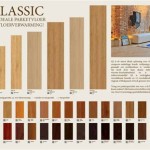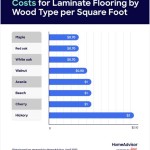Black Wooden Floor Ideas: A Comprehensive Guide
Black wooden floors represent a bold design choice, offering a sophisticated and dramatic aesthetic to any interior space. Their unique character provides a striking contrast against lighter walls and furnishings, creating a visually captivating environment. This article explores various ideas and considerations for incorporating black wooden floors into diverse home décor styles, highlighting the benefits, potential drawbacks, and practical tips for successful implementation.
Understanding the Appeal of Black Wooden Floors
The allure of black wooden floors stems from their ability to convey elegance and modernity. Unlike lighter wood tones that often project a casual or rustic feel, black floors introduce a sense of formality and refinement. This underlying characteristic makes them suitable for various architectural styles, from minimalist apartments to traditional homes seeking a contemporary update. The depth of color also enhances the perception of spaciousness, particularly when paired with light-colored walls and ample natural light. Black floors act as a neutral backdrop, allowing furniture and accessories to become focal points within the room. The dramatic contrast creates visual interest and prevents the space from feeling monotonous. In addition, the dark hue can effectively conceal minor imperfections and wear, making it a practical choice for high-traffic areas. However, it is important to select the appropriate finish and wood type to mitigate issues such as visible dust and scratches.
Choosing black wooden floors is not merely a trend; it is an investment in a timeless and visually striking design element that can significantly elevate the aesthetic appeal of any home. The versatility of black allows it to complement a wide range of color palettes and design styles, making it a worthwhile consideration for homeowners seeking a unique and sophisticated look.
Exploring Different Types of Black Wooden Floors
The term "black wooden floor" encompasses a variety of wood species that have been stained or treated to achieve a dark, almost black appearance. The underlying wood type plays a significant role in the floor's durability, texture, and overall aesthetic. Hardwood options, such as oak, maple, and walnut, are particularly well-suited for black staining due to their inherent density and ability to absorb the stain evenly. These woods offer excellent resistance to wear and tear, making them ideal for high-traffic areas such as hallways and living rooms.
Engineered hardwood flooring presents another viable option. Constructed with a core of plywood or high-density fiberboard topped with a veneer of real wood, engineered floors offer enhanced stability and resistance to moisture compared to solid hardwood. This makes them a suitable choice for basements or areas with higher humidity levels. The top veneer can be stained black just like solid hardwood, providing a consistent and aesthetically pleasing surface.
Bamboo flooring, while not technically wood, offers a sustainable and durable alternative. When stained a deep black, bamboo floors can mimic the look of traditional wood while providing a unique textured appearance. Bamboo is known for its rapid regeneration and hardness, making it an environmentally friendly and durable choice. The staining process itself can vary, including traditional stains, reactive stains, and even ebonizing techniques that chemically darken the wood. Each process produces a different shade and depth of black, allowing for customization to suit individual preferences and design requirements. The choice of stain and sealant is crucial for protecting the floor from scratches, fading, and moisture damage. Matte finishes are often preferred for black floors as they minimize glare and showcase the natural texture of the wood. Glossy finishes, on the other hand, can highlight imperfections and require more frequent cleaning to maintain their shine.
Design Considerations for Rooms with Black Wooden Floors
Integrating black wooden floors into a cohesive design scheme requires careful consideration of several factors, including wall color, furniture selection, lighting, and accessories. The contrast between the dark floor and lighter walls is a classic approach that creates a visually appealing and balanced space. White, off-white, and light gray walls are popular choices as they reflect light and prevent the room from feeling too dark or closed in. However, bolder color palettes can also be effective, particularly when used strategically to create accent walls or highlight architectural features. For example, a deep teal or emerald green wall can complement the black floor and add a touch of drama and sophistication.
Furniture selection should also prioritize contrast and visual interest. Light-colored sofas, chairs, and rugs can create a striking juxtaposition against the dark floor, while metallic accents such as brass or gold can add a touch of glamour and elegance. Natural materials like wood, leather, and linen can introduce warmth and texture, balancing the coolness of the black floor. Rugs play a crucial role in defining zones within a room and adding visual softness. A large, light-colored rug can anchor a seating area in a living room, while smaller rugs can define pathways or highlight specific furniture pieces. Consider the size and pattern of the rug to ensure it complements the overall design aesthetic.
Lighting is paramount when incorporating black wooden floors into a space. Adequate natural light is essential for preventing the room from feeling gloomy. Large windows and skylights can maximize natural light, while strategic placement of artificial lighting can supplement it. Recessed lighting, pendant lights, and floor lamps can all contribute to a well-lit and inviting atmosphere. Consider using warm-toned light bulbs to create a cozy and inviting ambiance. Accessories can add personality and visual interest to a room with black wooden floors. Artwork, plants, and decorative objects can introduce color, texture, and pattern. Choose accessories that complement the overall design style and reflect your personal taste. A gallery wall with colorful artwork can add a vibrant focal point, while indoor plants can bring life and freshness to the space.
Maintenance of black wooden floors is crucial for preserving their beauty and longevity. Regular sweeping or vacuuming is necessary to remove dust and debris, which can be more visible on dark surfaces. Use a microfiber mop and a pH-neutral cleaner specifically designed for hardwood floors to clean the floor. Avoid using harsh chemicals or abrasive cleaners, as these can damage the finish. Consider using area rugs in high-traffic areas to protect the floor from scratches and wear. Implement a "no shoes" policy to minimize the amount of dirt and debris tracked onto the floor. Periodically reapply a protective coating or sealant to maintain the floor's shine and durability.
Addressing Potential Challenges of Black Wooden Floors
While black wooden floors offer numerous aesthetic advantages, it's important to acknowledge potential challenges. One of the primary concerns is the tendency of black floors to show dust, dirt, and scratches more readily than lighter-colored floors. This requires more frequent cleaning and maintenance to keep the floor looking its best. Choosing a matte finish can help minimize the visibility of scratches and imperfections. Another challenge is the potential for the room to feel dark or closed in, particularly in spaces with limited natural light. This can be mitigated by using light-colored walls, ample lighting, and reflective surfaces such as mirrors. Carefully consider the size and layout of the room before committing to black wooden floors. In smaller spaces, it may be more effective to use black as an accent color rather than the primary flooring choice. For example, a black border or inlay can add a touch of drama without overwhelming the space. Additionally, black floors can absorb heat, which may be a consideration in warmer climates. Consider using area rugs to provide insulation and prevent the floor from becoming too hot to the touch. The perceived cost of black wooden floors can also be a factor. While the cost of staining or finishing wood black may not be significantly higher than other colors, the increased maintenance requirements can add to the overall expense over time. Factor in the cost of cleaning supplies, protective coatings, and potential repairs when budgeting for black wooden floors.
Despite these challenges, black wooden floors remain a popular choice for homeowners seeking a sophisticated and dramatic aesthetic. By carefully considering the design considerations and addressing potential challenges, it is possible to create a stunning and functional space that showcases the beauty and versatility of black flooring.
Examples of Black Wooden Floor Design Ideas
Several design themes can be adapted to incorporate black wooden flooring: Minimalist Designs: Here, the black floors serve as a grounding element, complemented by stark white walls, minimal furniture, and pops of color through artwork or a statement chair. The focus is on clean lines and uncluttered spaces, with the black floor enhancing the sense of simplicity and sophistication.
Modern Designs: Embrace bold patterns, geometric shapes, and sleek furniture. Pair the black floors with metallic accents, such as stainless steel or chrome, and incorporate vibrant colors like teal, emerald green, or mustard yellow. Textured rugs and statement lighting fixtures can add depth and visual interest.
Traditional Designs: Juxtapose the formality of black wood with plush textiles, ornate furniture, and classic architectural details. Incorporate rich colors like burgundy, navy blue, or forest green, and use antique or vintage accessories to create a sense of history and character.
Bohemian Designs: Layer textures, patterns, and colors to create a relaxed and eclectic vibe. Pair the black floors with kilim rugs, macrame wall hangings, and an abundance of plants. Incorporate natural materials like wood, leather, and rattan to add warmth and texture.
Industrial Designs: Play up the raw and edgy aesthetic by pairing the black floors with exposed brick walls, metal accents, and vintage industrial furniture. Keep the color palette muted and neutral, with pops of color coming from artwork or accessories. Concrete planters and exposed light bulbs can enhance the industrial feel.
Selecting the Right Wood Finish for Black Floors
The finish applied to black wooden floors significantly impacts their appearance, durability, and maintenance requirements. The finish type can affect the floor's sheen, texture, and resistance to scratches, moisture, and UV damage. Matte finishes are a popular choice for black floors as they minimize glare and showcase the natural texture of the wood. They also tend to hide scratches and imperfections better than glossy finishes. However, matte finishes may require more frequent cleaning as they can be more prone to trapping dirt and debris.
Satin finishes offer a balance between matte and glossy, providing a subtle sheen that enhances the wood's natural beauty. Satin finishes are easier to clean than matte finishes and offer good resistance to scratches and wear. Semi-gloss finishes provide a moderate level of shine and are a good option for those who want to add a touch of elegance to their black wooden floors. However, semi-gloss finishes can highlight imperfections and require more frequent cleaning to maintain their shine.
High-gloss finishes create a dramatic and luxurious look, but they are the most challenging to maintain. High-gloss finishes are prone to scratches and fingerprints, and they require frequent polishing to maintain their shine. Consider the level of maintenance you are willing to undertake before choosing a high-gloss finish. Polyurethane finishes are a durable and water-resistant option for black wooden floors. Oil-based polyurethane provides a warm, amber hue, while water-based polyurethane is clear and non-yellowing. Polyurethane finishes can be applied in matte, satin, semi-gloss, or high-gloss sheens.
Penetrating oil finishes, such as tung oil or linseed oil, penetrate the wood's pores to provide protection from within. Oil finishes enhance the wood's natural beauty and provide a soft, matte sheen. However, oil finishes require more frequent reapplication than polyurethane finishes. Wax finishes provide a natural and elegant look, but they are less durable and water-resistant than other types of finishes. Wax finishes require frequent buffing to maintain their shine and are not recommended for high-traffic areas.

Black Flooring Wood

Black Flooring Ideas Home Trends

Black Flooring Wood

Black Wood Floors

How To Style Black Wood Flooring Ted Todd

50 Captivating Painted Floor Ideas For Inspired Home Decor Black Wood Floors Living Room

Black Flooring Ideas Home Trends

3 Dark Floors Types And 26 Ideas To Pull Them Off Digsdigs

Contemporary Living Room White Walls Wood Floor Boards Floors Interior Design W

Black Flooring Wood
Related Posts








